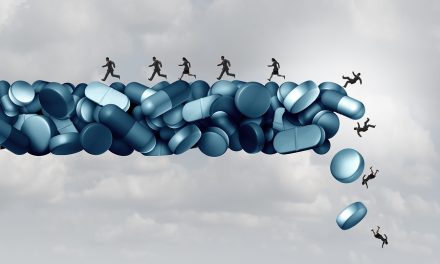Waste in Cancer Drugs Costs $3 Billion a Year
This story should anger you. Read on.
A group of cancer researchers at Memorial Sloan Kettering Cancer Center published a study on Tuesday in BMJ(formerly known as the British Medical Journal) which found that the Medicare program, and private health insurers, waste nearly $3 billion every year buying cancer medicine sold in vials too large for one patients use. Currently, nurses are only allowed to use drug leftovers in other patients if used within six hours, and only in specialized pharmacies. This behavior ensures that patients pay thousands of dollars for medicine they will never be given. And the drug companies are making a killing.
From the NY Times article:
“The researchers analyzed the waste generated by the top 20 selling cancer medicines and concluded that insurers paid drug makers $1.8 billion annually on discarded quantities and then spent about $1 billion on markups to doctors and hospitals.
‘Drug companies are quietly making billions forcing little old ladies to buy enough medicine to treat football players, and regulators have completely missed it,’ said Dr. Peter B. Bach, director of the Center for Health Policy and Outcomes at Memorial Sloan Kettering and a co-author of the study. ‘If we’re ever going to start saving money in health care, this is an obvious place to cut.'”
There are even non-cancer drugs that generate waste(which weren’t included in the study), including one that has an estimated profit of $500 million(of the drug’s $4.3 billion in annual sales). And again, this profit is made from simply throwing away excess quantities.
Utter waste.
One example from this study is Takeda Pharmaceuticals. They sell a drug called Velcade, for the treatment of multiple myeloma and lymphoma, but only in 3.5-milligram vials(which sell for $1,034). They hold enough medicine to treat someone who is 6 feet 6 inches tall and weighs 250 pounds. If you are smaller than that, the rest of the powder is simply thrown away. However, in Britian, Velcade is sold in 1-milligram and 3.5-milligram vials. Why is that, you ask? Because the governments in Europe play a more active role in drug pricing and distribution.
More from the article:
“Takeda is expected to earn $309 million this year on supplies of Velcade that are discarded, an amount that represents 30 percent of the drug’s overall sales in the United States, the cancer researchers estimated. If Takeda provided an additional vial size of 0.25 milligram, waste would be slashed by 84 percent, also reducing Velcade’s sales in the United States by $261 million annually, the researchers calculated.
‘You have these incredibly expensive drugs, and you can only buy them in bulk,’ said Dr. Leonard Saltz, who leads the pharmacy and therapeutics committee at Memorial Sloan Kettering and was a co-author of the study. ‘What’s really interesting is they’re selling these drugs in smaller vials in Europe, where regulators are clearly paying attention to this issue.’”
To add insult to injury, major drug makers routinely hike up the cost of the top selling drugs every year, and it’s at a rate far above the rate of inflation. It’s all about profit. While the drug industry claims that the high prices are needed to fund research, companies like Pfizer and Merck only spend 17 percent of their revenues on finding new drugs. The rest goes to marketing and, you guessed it, profits. P-R-O-F-I-T.
Thankfully, Drs. Bach and Saltz, authors of the study, are sick of this practice and have proposed that, “the government either mandate that drug makers provide medicines in enough vial sizes to minimize waste, or mandate that drug makers refund the government for wasted quantities.”
Maybe that will happen, when pigs fly.
Souce: NY Times












